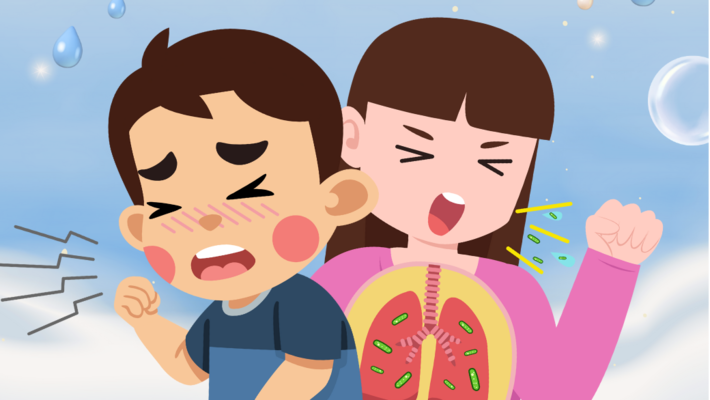Rainy days like this! Wet cough vs. Dry cough — what’s the difference?
Health News
Rainy days like this! Wet cough vs. Dry cough — what’s the difference?
The rainy season can make it hard to avoid a cough, but did you know not all coughs are the same? Coughs can be divided into two main types : a wet cough and a dry cough. Each has different causes and treatments, and understanding the difference can help you take care of yourself properly.
Wet Cough (Productive Cough)
A wet cough is a cough that produces phlegm or mucus. This is the body's natural mechanism to expel germs or foreign particles from the airways. The main causes are often infections in the lower respiratory system, such as bronchitis or pneumonia, as well as asthma and the common cold.
Symptoms :
- A "gurgling" sound in the throat or a feeling that something is stuck in your chest.
- Coughing up phlegm.
- The cough improves after phlegm is expelled.
- Often accompanied by other symptoms like difficulty breathing or a fever.
- Focus on using expectorants or mucolytics to help thin the phlegm and make it easier to cough up.
- Drink plenty of warm water to prevent the phlegm from becoming too thick.
- Get sufficient rest.
Dry Cough (Non-Productive Cough)
A dry cough is a cough that produces no phlegm. It is typically caused by irritation in the throat or upper respiratory tract. The most common causes are colds, allergies, or irritants like dust, smoke, or other allergens.
Symptoms :
- A sore or itchy throat when you cough.
- No phlegm is produced, but you feel a persistent irritation.
- The cough often gets worse at night.
- It can be the initial symptom of a cold before it develops into a wet cough.
- Focus on using cough suppressants to ease the cough reflex.
- Sip warm water or honey mixed with lemon to soothe your sore throat.
- Avoid triggers like dust, smoke, or cold air.

Follow Our Social Network


